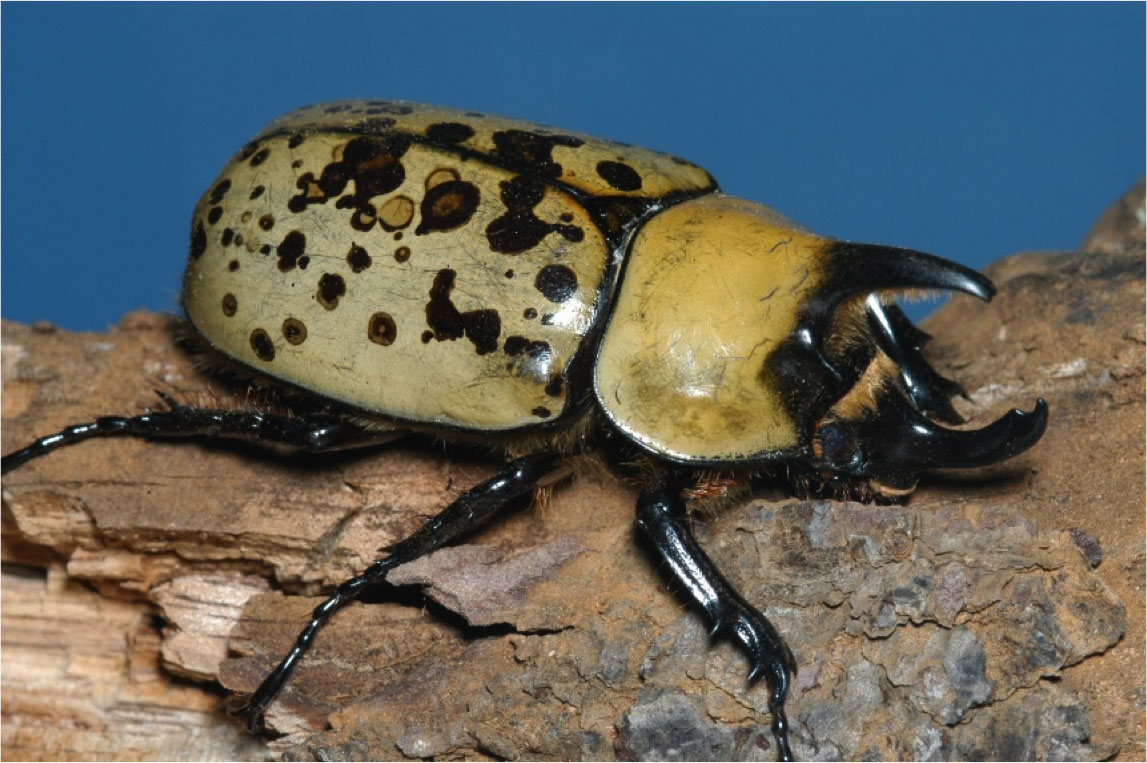Eastern Hercules Beetle, No 1

Eastern Hercules Beetle
Dynastes tityus
That’s a big insect! Eastern Hercules beetles are the largest insects in the state, with males exceeding 2 inches. We have plenty of insects that are longer or wider, but none that weigh more. These big beetles are not very common, and most people encounter only one or two in a life time, usually around the outsides of buildings where they have crash landed after being attracted to lights. Despite their size, Eastern Hercules beetles are able to fly. Females do not have the distinctive horns of the males, and both sexes vary in color, from the mottled green of the specimen shown here to a uniform dark brown. Eastern Hercules beetles lay their eggs in decaying hardwood logs and stumps. The larvae look like white grubs you might find when digging in the lawn or garden but are much larger. It takes about two years to complete a generation. Eastern Hercules beetles belong to a group of beetles known as rhinoceros beetles, because of those horns. Their South American relative, the Hercules beetle, is one of the largest insects in the world, with males exceeding six inches in length, though the horns account for about half of this length.
With a possible exception for motorcyclists who do not wear their helmet while riding at night, these big beetles are harmless to humans, but they do exude a foul-smelling odor that makes them a bit unpleasant to handle. They are also quite strong and can easily pry their way out of grasping fingers. Some people rear these beetles as pets.
Blake Layton, Extension Entomology Specialist, Mississippi State University Extension Service.
The information given here is for educational purposes only. Always read and follow current label directions. Specific commercial products are mentioned as examples only and reference to specific products or trade names is made with the understanding that no discrimination is intended to other products that may also be suitable and appropriately labeled.

